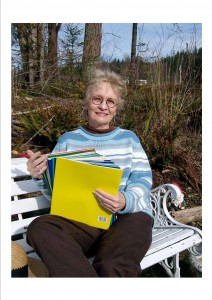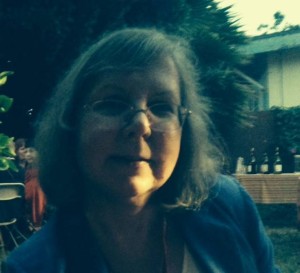 It’s a new year, so for 2018 we are offering something new on our blog. At the end of each month we’ll post five tips on one particular writing-related subject, one tip from each of the Mavens. Our first topic is WRITERS’ NETWORKS.
It’s a new year, so for 2018 we are offering something new on our blog. At the end of each month we’ll post five tips on one particular writing-related subject, one tip from each of the Mavens. Our first topic is WRITERS’ NETWORKS.
From Dawne Knobbe: Start a private Facebook group page with your writer friends to share industry information. You can post upcoming events, editors who are open to submissions, writing tips, etc. It’s easy. Here is how to get started:
How to Create a Facebook Group
- Find “Add Group” From your “home page” on Facebook go to the Groups section on the left side menu and find “Add Group”
- Click “Create New Group”
- Name Your Group
- Add Members
- Choose Privacy Setting
- Click “Create”
- Choose an Icon
- Complete “About” Section
From Judy Enderle: JOIN SCBWI, the Society of Children’s Book Writers and Illustrators This world-wide organization is dedicated to the creation and promotion of children’s literature. Membership is open to published and unpublished authors and illustrators and others interested in writing and illustrating books and other material for young readers. Visit www.scbwi.org to learn about all they have to offer.
From Cheryl Zach: Conferences are great for networking, as are any events where writers gather. If you’re shy–and many writers are introverts–going to a workshop or discussion group or any event with a predetermined subject to discuss will help break the ice. Put your area of interest–picture books, YA, nonfiction, etc.–on your name tag. This will make it easy for another attendee to start a conversation with you. Remember to smile. And remember that it’s bad manners to rush an editor or agent and try to give them a long verbal version of your current WIP. If they’re open to a short pitch, they will indicate it. Otherwise just smile, make a comment about their presentation, thank them for coming. . . And keep their email for queries if they noted they are open to those. If it’s hard for you to get out to group events, there are online groups you can join, publishing news you can read. SCBWI and other writing groups have discussion boards and local newsletters.
From Stephanie Jacob Gordon: TWO not ONE GREAT IDEA
Writers need a computer or a pencil or pen and paper and a good light to see by and a drink and snacks (OK, I really like snacks when I write). But along with my snacks, I need Judy. You see, we have been writing partners for 39 years. Judy keeps me going, motivated, and nagged to death when I am not writing. But you may not have a writing partner (you may not have mine), so you write alone, lonely, without someone to tell you if you are any good at writing, someone to encourage you to keep at it, or someone to tell you to give it up and get into plumbing and make some real money. What are you going to do?
Excellent question. I have two answers. Two because they are connected and number two probably will connect to most of the suggestions in this month’s tip list.
#1) TAKE A CLASS. Any writing class in whatever genre will help somewhat, but a class in writing for children, taught by a successful author, successful editor, or successful agent is a good place to begin. Not only will you learn some very important stuff to further your writing ability and career, but you will also meet writers. I met Judy in Eve Bunting’s class through UCLA. Will you meet your forever writing partner? Maybe, maybe not. But you will meet many like-minded people who are, like you, actively pursuing how to write for young readers. You will all be in the same place, at the same time, and be able to progress together. And you will make a friend or two or ten, like Judy and I did in Eve’s class.
#2) FORM A CRITIQUE GROUP. In fact no matter where you meet other children’s book writers, think critique group. Do they want one? Do they have one? Would they like to start one with you? Will they have room in theirs for you to join? When I met Judy I was new to Malibu, but she was already in a local group and I joined her group. When Eve’s class was over, all eleven of us started a group and we traveled to each other’s homes for our every-two-weeks meeting. Judy and I traveled farthest, but we had each other to talk to and slowly became best friends. YAY for writer’s classes! One of our group dropped out due to a work commitment, but the ten of us left became friends and all of us are published! Some of us are pretty well-known writers, too (sorry, not a name dropper, but I do know some amazing writers). From Stephanie, who is lucky to be Judy’s writing partner and 1/2 of Jeffie Ross Gordon . . .thanks to Eve’s class.
From Laurie Lazzaro Knowlton: OTHER EYES
Your writer’s instinct, along with your agent and your editor, have let you know that you are off track somewhere in the manuscript you’ve been slaving over. But where? And if you know where, how do you approach a fix? This is where “other eyes” might come into play. Over time, you’ll learn which writer friends connect with you and your work. Make an agreement to be “eyes and ears” for each other when you are stuck on your story, when there’s a hole in the plot that seems to keep getting deeper rather than filling up, when you are ready to make confetti out of your manuscript. You can do this via computer so friends don’t have to live nearby. Be respectful of each other’s time. Some friends may have time to answer and others may not. It can take many heads and many hearts to birth a good book. And when you write acknowledgments for your book, don’t forget the “eyes and ears. (Laurie is deep in manuscript revision right now; she is the author of this month’s blog post. So this tip is ghostwritten by another Maven.)






